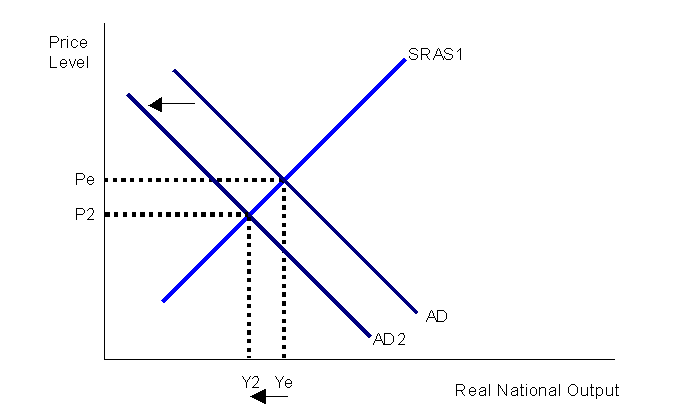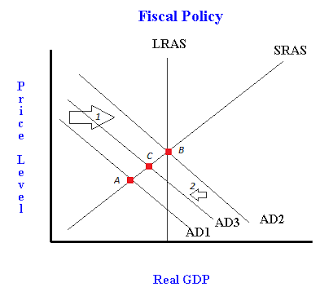 All papers examples
All papers examples
Disciplines

- MLA
- APA
- Master's
- Undergraduate
- High School
- PhD
- Harvard
- Biology
- Art
- Drama
- Movies
- Theatre
- Painting
- Music
- Architecture
- Dance
- Design
- History
- American History
- Asian History
- Literature
- Antique Literature
- American Literature
- Asian Literature
- Classic English Literature
- World Literature
- Creative Writing
- English
- Linguistics
- Law
- Criminal Justice
- Legal Issues
- Ethics
- Philosophy
- Religion
- Theology
- Anthropology
- Archaeology
- Economics
- Tourism
- Political Science
- World Affairs
- Psychology
- Sociology
- African-American Studies
- East European Studies
- Latin-American Studies
- Native-American Studies
- West European Studies
- Family and Consumer Science
- Social Issues
- Women and Gender Studies
- Social Work
- Natural Sciences
- Anatomy
- Zoology
- Ecology
- Chemistry
- Pharmacology
- Earth science
- Geography
- Geology
- Astronomy
- Physics
- Agriculture
- Agricultural Studies
- Computer Science
- Internet
- IT Management
- Web Design
- Mathematics
- Business
- Accounting
- Finance
- Investments
- Logistics
- Trade
- Management
- Marketing
- Engineering and Technology
- Engineering
- Technology
- Aeronautics
- Aviation
- Medicine and Health
- Alternative Medicine
- Healthcare
- Nursing
- Nutrition
- Communications and Media
- Advertising
- Communication Strategies
- Journalism
- Public Relations
- Education
- Educational Theories
- Pedagogy
- Teacher's Career
- Statistics
- Chicago/Turabian
- Nature
- Company Analysis
- Sport
- Paintings
- E-commerce
- Holocaust
- Education Theories
- Fashion
- Shakespeare
- Canadian Studies
- Science
- Food Safety
- Relation of Global Warming and Extreme Weather Condition
Paper Types

- Movie Review
- Essay
- Admission Essay
- Annotated Bibliography
- Application Essay
- Article Critique
- Article Review
- Article Writing
- Assessment
- Book Review
- Business Plan
- Business Proposal
- Capstone Project
- Case Study
- Coursework
- Cover Letter
- Creative Essay
- Dissertation
- Dissertation - Abstract
- Dissertation - Conclusion
- Dissertation - Discussion
- Dissertation - Hypothesis
- Dissertation - Introduction
- Dissertation - Literature
- Dissertation - Methodology
- Dissertation - Results
- GCSE Coursework
- Grant Proposal
- Admission Essay
- Annotated Bibliography
- Application Essay
- Article
- Article Critique
- Article Review
- Article Writing
- Assessment
- Book Review
- Business Plan
- Business Proposal
- Capstone Project
- Case Study
- Coursework
- Cover Letter
- Creative Essay
- Dissertation
- Dissertation - Abstract
- Dissertation - Conclusion
- Dissertation - Discussion
- Dissertation - Hypothesis
- Dissertation - Introduction
- Dissertation - Literature
- Dissertation - Methodology
- Dissertation - Results
- Essay
- GCSE Coursework
- Grant Proposal
- Interview
- Lab Report
- Literature Review
- Marketing Plan
- Math Problem
- Movie Analysis
- Movie Review
- Multiple Choice Quiz
- Online Quiz
- Outline
- Personal Statement
- Poem
- Power Point Presentation
- Power Point Presentation With Speaker Notes
- Questionnaire
- Quiz
- Reaction Paper
- Research Paper
- Research Proposal
- Resume
- Speech
- Statistics problem
- SWOT analysis
- Term Paper
- Thesis Paper
- Accounting
- Advertising
- Aeronautics
- African-American Studies
- Agricultural Studies
- Agriculture
- Alternative Medicine
- American History
- American Literature
- Anatomy
- Anthropology
- Antique Literature
- APA
- Archaeology
- Architecture
- Art
- Asian History
- Asian Literature
- Astronomy
- Aviation
- Biology
- Business
- Canadian Studies
- Chemistry
- Chicago/Turabian
- Classic English Literature
- Communication Strategies
- Communications and Media
- Company Analysis
- Computer Science
- Creative Writing
- Criminal Justice
- Dance
- Design
- Drama
- E-commerce
- Earth science
- East European Studies
- Ecology
- Economics
- Education
- Education Theories
- Educational Theories
- Engineering
- Engineering and Technology
- English
- Ethics
- Family and Consumer Science
- Fashion
- Finance
- Food Safety
- Geography
- Geology
- Harvard
- Healthcare
- High School
- History
- Holocaust
- Internet
- Investments
- IT Management
- Journalism
- Latin-American Studies
- Law
- Legal Issues
- Linguistics
- Literature
- Logistics
- Management
- Marketing
- Master's
- Mathematics
- Medicine and Health
- MLA
- Movies
- Music
- Native-American Studies
- Natural Sciences
- Nature
- Nursing
- Nutrition
- Painting
- Paintings
- Pedagogy
- Pharmacology
- PhD
- Philosophy
- Physics
- Political Science
- Psychology
- Public Relations
- Relation of Global Warming and Extreme Weather Condition
- Religion
- Science
- Shakespeare
- Social Issues
- Social Work
- Sociology
- Sport
- Statistics
- Teacher's Career
- Technology
- Theatre
- Theology
- Tourism
- Trade
- Undergraduate
- Web Design
- West European Studies
- Women and Gender Studies
- World Affairs
- World Literature
- Zoology
U.S. Posts $3 Billion Budget Surplus for January, Essay Example
Hire a Writer for Custom Essay
Use 10% Off Discount: "custom10" in 1 Click 👇
You are free to use it as an inspiration or a source for your own work.

Introduction
The article addresses the topic of the United States budget surplus for the month of January 2013. The main message of the article is: The United States posted an (unexpected) surplus of approximately $3 billion in January of this year on the back of increased revenues from the expired payroll tax “holiday.” For the purposes of discussion, there are a number of key terms that will be used: budget deficit refers to when expenditures outstrip revenues for the budget; budget surplus refers to when revenues outstrip expenditures. The discussion will primarily focus on the tension in economic theory between the short-term need to stimulate the economy on the one hand, and the long-term need to prevent “crowding out” of private sector investment.
There are two diagrams that may help in the explanation of this issue. The first is a graph that shows the (potential) role of government spending during an economic downturn.
Diagram 1: The interaction between aggregate demand and supply:

After the United States entered economic recession after the 2007-2008 financial crisis, the economy moved from point ye (output at equilibrium) to y2 (output after the economic shock). According to Keynesian theory, a country in the throes of economic recession needs to “prime the pump” (increase government spending) as both private firms and consumers do not necessarily have the resources to undertake economic activity.
The United States took Keynes’ advice following the economic downturn increasing government spending (stimulus) in order to promote economic growth. During the time period, the US government posted robust deficits; that is, the government borrowed money, primarily through sovereign bond offerings during a time of historically low interest rates. Another policy which is often times lost in the debate, but brought back into focus by this article is: tax policy. The US government authorized a payroll tax “holiday” during the economic recession when individuals’ contribution to Social Security (via the payroll tax) reduced from 6.2% to 4.2%- the thinking underpinning the payroll tax holiday was: increase consumers’ disposable income that might increase spending and increase economic growth. This policy lasted for two years; however, as part of a political bargain in 2012 to raise the nation’s “debt ceiling”, the payroll tax holiday was not renewed.
All of the previous analysis points to a larger debate: the tension between running short-term deficits to stimulate the economy with long-term issues related to “crowding-out” or private investment and the inability to pay it off. From this context, the US announcement of a budget surplus in January is more of an anomaly than a representation of the country’s true fiscal condition moving forward. Indeed, although the country ran a surplus in the month of January the country still boasted an overall deficit of roughly $800 billion.
This raises the question of how much more fiscal support will be needed to support the economy, while realizing that future resources to support current action may be limited.
Indeed, continued government support of the economy, whether in the form of fiscal spending or quantitative easing, is expected over the short-term. This is in spite of the sequestration that has led to a cut in many programs but still resulted in growth of spending overall. Is this support sustainable? And, if so, is it desirable?
There are two different arguments here. First, continued funding of fiscal spending is theoretically possible, but faces limitations: Those limitations are the function of putative “bond vigilantes” who will only take so much borrowing before they will demand a higher interest rate and thus make borrowing to finance current spending less attractive. Over the short-term, however, there also may be tradeoffs: the trade-off comes in the form of public spending “crowding out” private spending”

Diagram 2 shows one potential scenario where government spending “crowds out” or impedes private spending leading to a lower level of output that is possible. After the economy falls to point “AD1” on the graph, the government undertakes stimulus and other measures that gets the economy to “AD3”; the economy is unable to make it to the equilibrium state because the government, through excessive borrowing, may take resources that the private sector might invest to better use. This use of resources will be inefficient and leave the economy worse off over the long-term. Other commentators, however, that there is enough slack in the economy to allow further government expenditure because the private sector and consumers still are not at a place where they can support economic growth, at least not at their previous level.

Stuck with your Essay?
Get in touch with one of our experts for instant help!
Tags:

Time is precious
don’t waste it!
writing help!


Plagiarism-free
guarantee

Privacy
guarantee

Secure
checkout

Money back
guarantee

